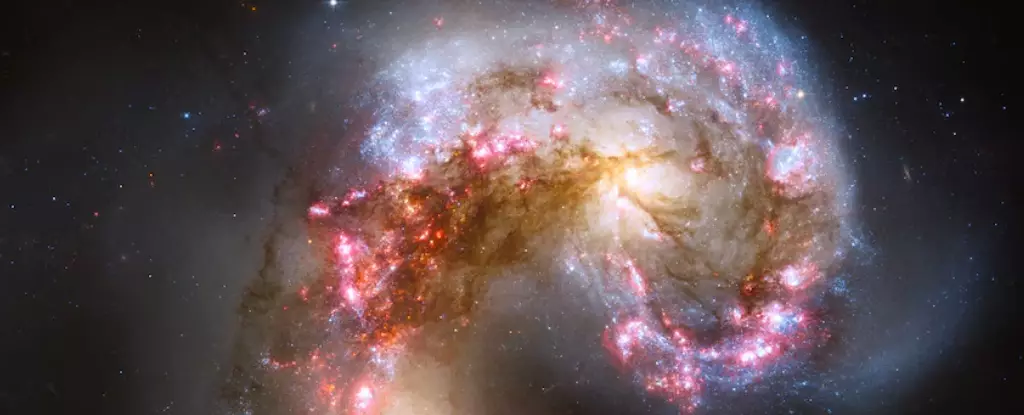Astrophysics is a continually evolving field, compelling both scientists and enthusiasts alike to grapple with its profound complexities. Recently, researchers embarked on a pivotal journey to solve one of the longstanding enigmas surrounding the formation of massive elliptical galaxies. By leveraging advanced observational data, new findings have emerged, offering significant clues about how these cosmic structures came to be. Published in the esteemed journal Nature, this research represents a milestone in our comprehension of galactic evolution.
To appreciate the significance of the new findings, it is essential to recognize the two primary types of galaxies present in the universe today: spiral galaxies and elliptical galaxies. Spiral galaxies, such as our own Milky Way, are characterized by their flat, rotating disks rich in gas and ongoing star formation. They are dynamic systems, constantly birthing new stars and evolving with time. In contrast, elliptical galaxies are typically larger, more spherical formations that appear to have diminished star-forming activities over cosmic time. These galaxies predominantly consist of old stars, many of which were formed over 10 billion years ago, leading astronomers to ponder how these distinct forms emerged.
The formation mechanisms of elliptical galaxies have puzzled astrophysicists for decades. Traditional cosmological models, which describe the universe’s evolution from the Big Bang onwards, have struggled to account for the conditions under which elliptical galaxies could crystallize from the primordial chaos. The standard understanding posited that galaxies began their lives as flat disks, similar to spirals, which later transitioned into elliptical shapes. However, this leaves crucial questions unanswered, specifically regarding how such a dramatic transformation could transpire.
Collaboration among scientists has propelled the latest advances in understanding elliptical galaxy formation. Utilizing data from the Atacama Large Millimeter/submillimeter Array (ALMA), researchers recently identified the birthplaces of giant elliptical galaxies through rigorous analysis. Their investigations revealed that these galaxies underwent rapid and intense bursts of star formation in the early universe, supported by observations from flat, disk-shaped models.
The research team meticulously examined the distribution of dust in over 100 distant galaxies, young enough to be forming stars while the universe was still in its infancy—approximately 2.2 billion to 5.9 billion years after the Big Bang. Dust acts as a fundamental marker for gas density, indicating where new stellar formations take place. Surprisingly, the results showed that the dust clumps in these galaxies were highly compact and deviated from the expected characteristics of flat, disk-like galaxies. Instead, the emitted dust more closely resembled the morphology of contemporary elliptical galaxies, suggesting early star formations occurred in a three-dimensional, spherical arrangement.
The research team did not stop at merely identifying this surprising morphology; they delved deeper into the underlying mechanisms driving these phenomena. By employing sophisticated cosmological simulations, they conceptualized the physical processes that might contribute to the influx of dust and gas toward the nuclei of these evolving galaxies. The findings indicated that interactions with surrounding galaxies, such as mergers and gas streams, could result in a significant accumulation of gas and dust in compact regions. This revelation not only provides a plausible explanation for the rapid formation of elliptical galaxies but also adds an essential piece to the cosmic puzzle of galaxy evolution.
Many of the insights draw their strength from innovative analytical techniques developed to measure dust distribution more accurately than traditional methods allow. ALMA’s unique observational capabilities differ fundamentally from those of optical telescopes, leading to a more nuanced understanding of the complexities at play in massive galaxies. The current study underscores the impact of collaborative research, emphasizing how the sharing of open-access data catalyzes scientific breakthroughs.
Looking ahead, the field of astrophysics stands on the brink of even more illuminating discoveries. The forthcoming James Webb Space Telescope (JWST) and the Euclid Observatory promise to deepen our understanding of star distribution in the ancestors of elliptical galaxies. Meanwhile, the Extremely Large Telescope (ELT), with its unprecedented mirror size, is expected to resolve significant details of star-forming cores in distant galaxies. Enhanced observations of gas dynamics through ALMA and the Very Large Telescope will further elucidate the intricate mechanisms governing gas and dust movements toward galaxy centers, ultimately shaping the diverse galaxy configurations we observe today.
The recent breakthroughs in understanding the formation of elliptical galaxies not only illuminate a perplexing aspect of cosmic history but also pave the way for future discoveries. As researchers continue to evolve their techniques and methodologies, the path to deciphering the universe’s grand design remains both inspiring and humbling.


Leave a Reply